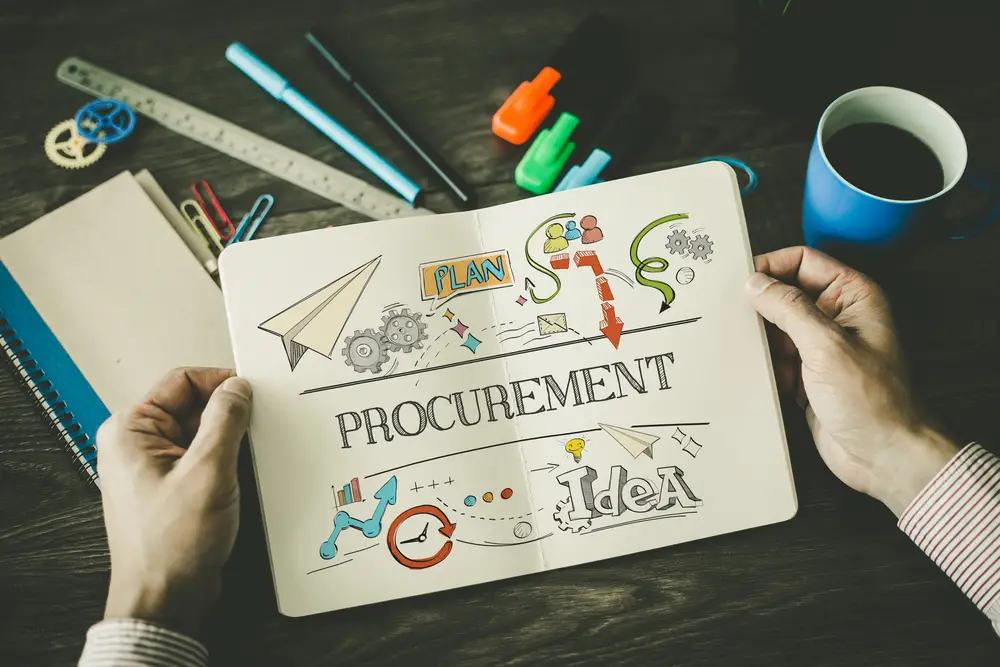Project management is about controlling costs, schedules, and resources to produce a successful outcome. But there’s another key element that must be managed effectively: risk. Any project involves some risk, whether it’s the possibility of delays or disruptions, changes in scope or requirements, or even unforeseen circumstances. Crucial risk management and procurement in project management addressing project management concepts are important.
To increase the chances of success, project managers must master the art of risk management. Part of this involves procuring the resources and materials necessary to complete the project. By carefully assessing risks and taking steps to mitigate them, project managers can help ensure that their projects are completed on time, within budget, and to the required standards.
Risk and procurement management are two of the most important aspects of any project manager’s job. After all, no project can be successful if it is not properly planned and managed. And yet, many project managers fail to address risk or procurement when planning their projects adequately. As a result, projects often run into problems that could have been easily avoided and ensured project success.
mastering risk and procurement in project management as a project manager, you’ll need to identify and deal with risks throughout the project lifecycle. Risk management should be part of your project plan; you’ll need to identify project risks at inception so that you can make contingencies for them. This will allow you to determine an appropriate response, such as avoiding, minimizing or transferring the risk. Identifying risks at every stage in the project lifecycle is also important.
This blog post will examine risk and procurement management and why they are so important. We’ll also provide some tips on how to master both risk and procurement so that you can avoid common pitfalls and ensure that your projects are successful.

What is Risk Management?
Risk management is identifying, assessing, and responding to risks. It is an important component of project management because it helps project managers avoid or mitigate potential problems that could jeopardize the success of their projects.
Project managers are certified project management professional who gets credentials from the project management institute, making them expert project manager. Best practice risk management aligns with general operations management and controlling and resolving unexpected problems of procurement tasks.
There are three primary steps in risk management:
1) Identifying risks
The first step in managing risk is to identify potential risks. This can be done through various means, including brainstorming sessions, literature reviews, and interviews with subject matter experts.
2) Assessing risks
Once potential risks have been identified, they must be assessed in terms of their likelihood and impact. This will help project managers prioritize which risks need to be addressed first.
3) Responding to risks
Once risks have been identified and assessed, project managers must develop plans to respond to them. This may involve developing contingency plans, modifying the project schedule, or changing the scope. Technical management of critical processes
Risk management is vital to any project manager’s job because it helps identify potential problems before they occur.
What is Procurement Management?
Procurement management is the process of acquiring goods and services for a project. It includes everything from soliciting bids from vendors to awarding contracts and making payments. To effectively manage procurement, project managers must understand the purchasing process and the legal regulations surrounding procurement.
This includes everything from negotiating contracts to managing supplier relationships. Procurement management is an important part of project management because it ensures that all the necessary resources are obtained promptly and cost-effectively.
An effective procurement management plan will consider the project’s specific needs and identify the most reliable and cost-effective sources for each item or service. Developing strong relationships with suppliers is also important to get the best possible terms and conditions.
Procurement management can be complex and time-consuming, but it is essential to ensure that a project stays on track and within budget. There are four main steps in procurement management:

1) Developing the procurement plan
The first step in managing procurement is to develop a plan for how goods and services will be acquired. This plan should consider factors such as the type of goods or services needed, the budget for acquisition, the timeline, and any legal restrictions that apply.
2) Soliciting bids
Once the procurement plan has been developed, project managers can solicit bids from potential vendors. Bids should be evaluated based on some factors, including price, quality, delivery time, and past performance.
3) Awarding contracts
After evaluating bids, contracts can be awarded to the winning vendors. It is important to ensure that all contracts are legally binding and that all parties understand their obligations under the contract before signing off on it.
Awarding contracts begins with the request for proposal (RFP), in which contractors submit their qualifications and prices. The RFP is followed by a review process, during which the project manager evaluates the proposals and selects the contractor who is best suited for the job.
The project manager then negotiates the terms of the contract with the selected contractor. Once the contract is signed, the project manager is responsible for monitoring the progress of the work and ensuring that it is completed on time and within budget.
4) Making payments
The final step in procurement management is making payments to the vendors who have supplied goods or services according to their contract agreement. Payments should be made promptly so as not to jeopardize future business relationships with the vendor.
Procurement management is critical to any project manager because it ensures that necessary goods and services are acquired promptly and within budget. By developing a comprehensive procurement plan and soliciting bids from multiple vendors, project managers can save their projects both time and money.
As a project manager, one of your key responsibilities is to ensure that payments are made on time and in the correct amount. This can be a challenge, as you may be working with various vendors and contractors who have their own invoicing and payment schedules. However, there are a few things you can do to streamline the process.
First, ensure that you clearly understand the invoicing and payment procedures for each vendor. This will help you to know when payments are due and how to track them. Second, develop a system for tracking payments. This can be as simple as maintaining a spreadsheet or using accounting software. Finally, stay on top of payments by communicating regularly with vendors and following up if payments are late.
Conclusion
Risk management and procurement management are vital aspects of any project manager’s job description. By taking the time to assess properly and respond to risks early on in the planning process and by developing a comprehensive procurement plan, project managers can save their projects both time ans money. By mastering these two crucial aspects, project managers set themselves up for success. Further mastering risk and procurement in project management can be found in the link.

Chris Ekai is a Risk Management expert with over 10 years of experience in the field. He has a Master’s(MSc) degree in Risk Management from University of Portsmouth and is a CPA and Finance professional. He currently works as a Content Manager at Risk Publishing, writing about Enterprise Risk Management, Business Continuity Management and Project Management.

